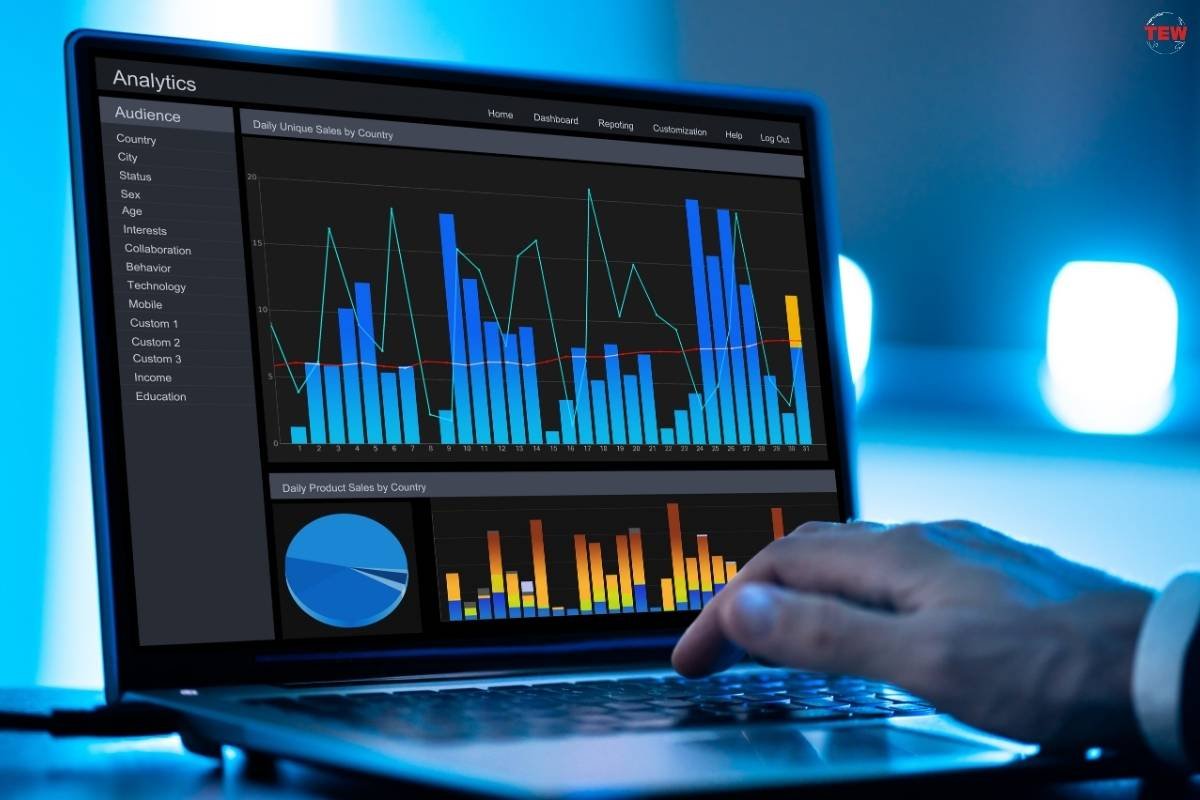Source-First Citizens Bank
The landscape of retail inventory management is witnessing a rapid transformation, driven by technological advancements and changing business environments. This article uncovers the latest trends in retail inventory management software and inventory optimization software that are projected to reshape the industry in 2024, offering a glimpse into the future of inventory management technology.
Retail Inventory Management is the process by which retail businesses ensure they maintain an optimal level of stock to meet customer demand. It involves tracking inventory levels, ordering, storing, and utilizing stock effectively to prevent shortages or excesses. The successful implementation of retail inventory management hinges on a blend of different inventory management techniques. These techniques cater to various factors such as inventory levels, location, pricing, logistics, and supply chain elements. While this process can be time-consuming and intricate, modern retail inventory management software is increasingly simplifying these tasks, making inventory management more efficient and less prone to error.
. Different types of inventory management models help determine the most suitable method for a business and how to enhance the efficiency of the chosen method. Some commonly used models include Just in Time (JIT), Day Sales of Inventory (DSI), Materials Requirement Planning (MRP), Centralized Inventory Model (CIM), Economic Order Quantity (EOQ), and Economic Production Quantity (EPQ). As technology continues to advance, hybrid and combination models that leverage multiple models are emerging, offering more flexible and efficient solutions for inventory management.
Top Trends in Retail Inventory Management Software
In 2024, retail inventory management software will be central to improving efficiency, reducing costs, and streamlining supply chains and distribution networks. Let’s delve into the key trends expected to shape this space:
1. Cloud-Based Inventory Management

In 2024, cloud-based inventory management remains a pivotal technological trend. Its accessibility from anywhere with an internet connection fosters real-time inventory control, enabling businesses to scale operations seamlessly and make data-driven decisions. This technology’s cost-efficiency, driven by a subscription-based model, eliminates heavy upfront investments, while the integration with other systems enhances collaboration across departments, offering a comprehensive approach to inventory management.
Moreover, expect further advancements in AI integration for predictive analytics and automation, empowering businesses to optimize inventory levels and reduce costs. Enhanced security measures, mobile-friendly interfaces, and a focus on sustainability through waste reduction and resource optimization will underscore the continued evolution and adoption of cloud-based inventory management throughout 2024.
2. Integration with Internet of Things (IoT)
IoT devices, such as RFID tags, sensors, and beacons, can track inventory throughout the supply chain. They gather data on factors like temperature, humidity, movement, and shelf life, allowing for precise monitoring of goods. This real-time data facilitates proactive decision-making, such as predicting maintenance needs, identifying potential stock shortages, or ensuring optimal storage conditions.
The integration of IoT with inventory management systems enables automation and optimization of processes. For instance, IoT-enabled devices can trigger automatic reordering when inventory levels reach a specified threshold, reducing the risk of stockouts or overstocking. Moreover, IoT data combined with advanced analytics and machine learning empowers businesses to forecast demand more accurately, streamline logistics, and enhance overall operational efficiency. Expect this trend to persist and expand as companies leverage IoT’s capabilities to create smarter, more responsive, and efficient inventory management systems.
3. Artificial Intelligence and Machine Learning
Artificial Intelligence (AI) and Machine Learning (ML) are transforming inventory management by enabling smarter decision-making, predictive capabilities, and automation. Here’s how they impact this field:
- Demand Forecasting: AI and ML algorithms analyze historical data, market trends, seasonal variations, and even external factors like weather or economic conditions to predict future demand more accurately. This helps businesses optimize inventory levels, reducing excess stock while minimizing stockouts.
- Optimization and Automation: These technologies automate inventory processes by continuously learning from data patterns. They optimize reorder points, suggest optimal stocking levels, and even automate purchase orders or production schedules based on demand forecasts, reducing manual intervention.
- Dynamic Pricing: AI-powered systems can adjust pricing dynamically based on inventory levels, demand fluctuations, and market conditions, maximizing revenue potential and optimizing inventory turnover.
- Supply Chain Optimization: ML algorithms analyze supply chain data to identify inefficiencies, predict delivery times, optimize routing, and manage supplier relationships. This results in more streamlined and efficient logistics operations.
- Quality Control and Maintenance: AI-driven image recognition and sensor data analysis assist in quality control by identifying defective products or potential equipment failures. This proactive approach helps prevent issues before they escalate.
- Personalized Inventory Management: AI can personalize inventory recommendations based on customer behavior, preferences, and purchase history, ensuring a more tailored and efficient inventory strategy.
The integration of AI and ML in inventory management systems empowers businesses to make data-driven decisions, optimize operations, reduce costs, and enhance overall efficiency throughout the supply chain. As these technologies continue to evolve, expect even more sophisticated and nuanced applications in inventory management.
4. Data Analytics for Predictive Decision-Making

Data analytics has the potential to revolutionize inventory management by providing insights into customer behavior and purchasing patterns. This information can be used to improve efficiency in warehouses by placing commonly purchased products together and predicting future orders.
5. Automation in Warehouse Management
Automation in warehouse management can significantly reduce labor costs and increase efficiency. As AI, ML, and robotics continue to advance, automation possibilities in warehouse management will only increase, offering more cost-efficient solutions.
Conclusion
The future of retail inventory management software is set to be shaped by advances in technology and changing business environments. These trends offer a glimpse into how inventory management techniques prevalent in the industry will evolve, promising more streamlined, efficient, and cost-effective inventory management processes. As businesses continue to navigate these changes, adopting relevant management trends and harnessing the potential of retail inventory management software will be crucial to staying competitive and delivering exceptional customer experiences.




